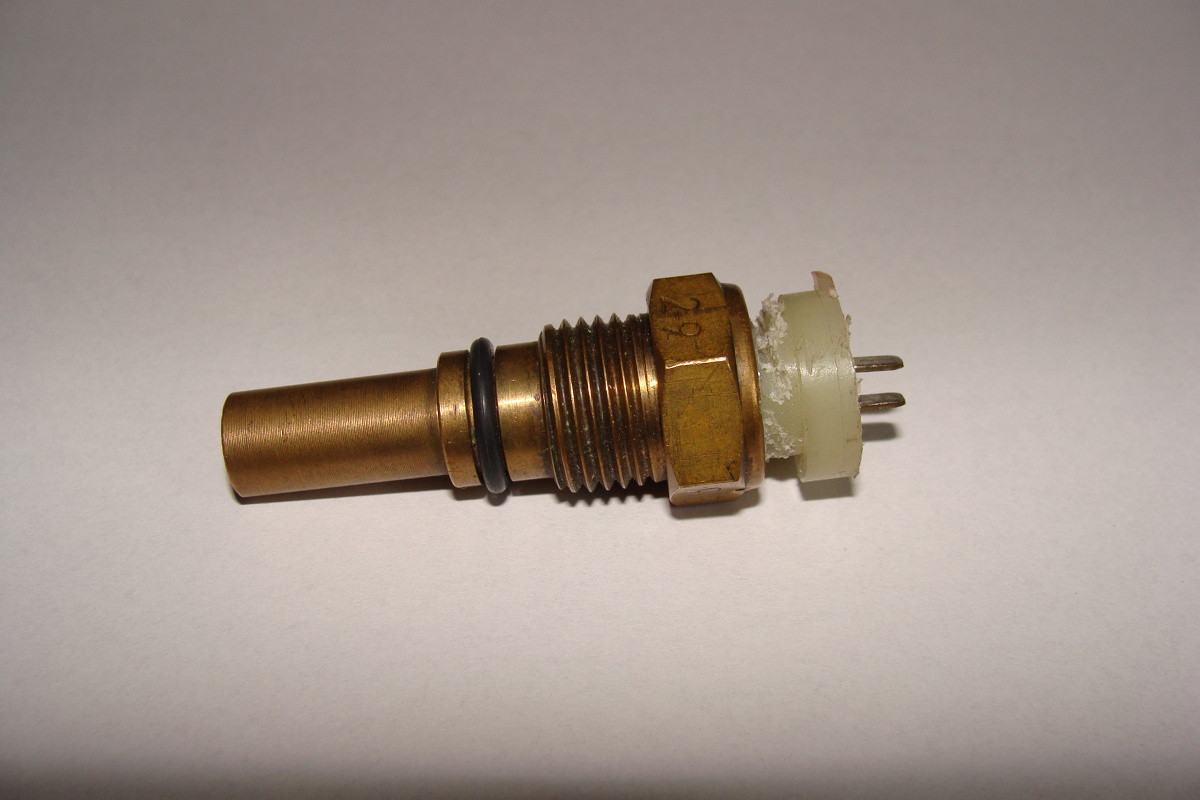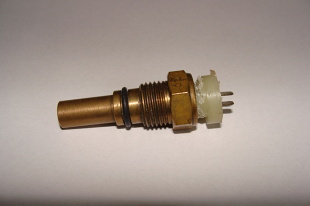
Engine temperature sensor
 Its signal is one of the important parameters on the basis of which the engine control unit calculates the instantaneous value of the ignition timing and the dose of injected fuel.
Its signal is one of the important parameters on the basis of which the engine control unit calculates the instantaneous value of the ignition timing and the dose of injected fuel.
In modern vehicles, engine temperature is measured by an NTC resistance sensor located in  engine coolant. The abbreviation NTC stands for Negative Temperature Coefficient, i.e. in the case of such a sensor, its resistance decreases with increasing temperature.
engine coolant. The abbreviation NTC stands for Negative Temperature Coefficient, i.e. in the case of such a sensor, its resistance decreases with increasing temperature.
The temperature is a correction parameter for calculating the ignition timing by the engine control unit. In the absence of information about the engine temperature, a substitute value is used for calculations, usually 80 - 110 degrees Celsius. In this case, the ignition advance angle decreases. Thus, the motor is protected from overloads, but its performance is reduced.
The basic injection dose, which is determined depending on the engine speed and load, in the cold start phase, as well as in other operating conditions, must be adjusted accordingly. The composition of the mixture is adjusted, including, according to the signal of the engine temperature sensor. If it is absent, a substitute temperature value is taken for calculations, as in the case of ignition control. However, this can cause difficult starting (sometimes even impossible) and uneven operation of the drive unit during warm-up. This is because the replacement temperature usually refers to an already warm engine.
If there is no substitute value, or there is a short circuit in the circuit, then the mixture is not enriched, because the short circuit, i.e. low circuit resistance, corresponds to a hot engine (NTC sensor resistance decreases with increasing temperature). In turn, an open circuit, i.e. infinitely high resistance, read by the controller as a state of extreme engine cooling, causing the maximum possible enrichment of the fuel dose.
An NTC type sensor works well by measuring its resistance, preferably at several points in its characteristic. This requires deliberate heating of the sensor to certain temperatures.
